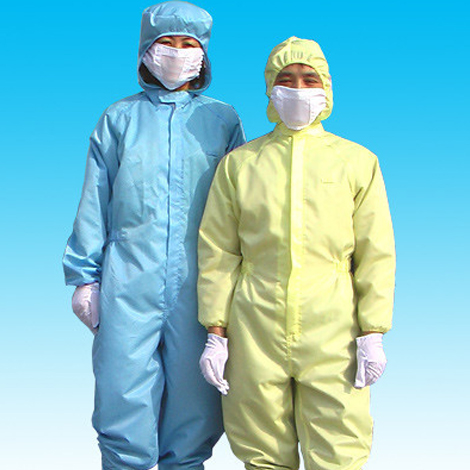2023-03-22 13:34:33

1.Accessories such as buttons, zippers, hooks, and hooks for industry work wear should preferably be made of non-metallic materials such as plastic or nylon. If metal accessories are used in the production of industry work wear, they should be tried on to ensure that metal accessories are not exposed when wearing and engaging in various activities.
2. Looking at the reverse side of the industry work wear, pockets, welts, reinforcement cloth, etc., it is best to use the same anti-static fabric for production; "If made of other materials, the exposed area should be less than 20% of the exposed area within all antistatic clothing.".
3."For cotton clothes and fully lined industry work wear made for cold and warm protection or other special requirements, the cotton inner sleeve and full lining shall be removable.".
4. Check the antistatic fabric. For the same type of conductive fiber, the higher the density added, the better its antistatic performance. During transportation, it should be noted that the anti-static industry work wear must have a cover on them, and the packaging must not be damaged to prevent exposure to sunlight and high temperatures; During transportation, it is strictly prohibited to drag with hand hooks. Antistatic industry work wear should be stored in a dry and ventilated warehouse to prevent mildew and deterioration. During storage, it should be at least 200mm away from the ground and walls, and at least 1m away from all heating elements. Avoid direct sunlight and prohibit placing in the open air.
5. When packaging and storing antistatic wool knitted fabrics, an appropriate amount of mothproof agent must be added. It is best to use neutral detergent to clean antistatic industry work wear. When washing, do not mix them with other clothes. Use hand washing or washing machine soft washing procedures to avoid breakage of conductive fibers. The washing water temperature should be below 40 ℃, and normal temperature water should be used for rinsing. The washing time should be as short as possible, but sufficient rinsing must be performed to remove residual detergent. Do not use bleach or organic solvents to decontaminate antistatic industry work wear that have both flame retardant and oil resistant properties.
6. It is prohibited to attach or wear any metal objects to the antistatic clothing. Tools that need to be carried with you should have anti static and anti spark functions; Metal tools should be placed in the belt of anti-static industry work wear, and exposure of metal parts is prohibited.
7.It is prohibited to wear or take off anti-static industry work wear in flammable and explosive places.
8. In areas with strong electromagnetic environments or nearby high-voltage bare wires, anti-static industry work wear should not be worn. Service life: If the anti-static industry work wear are damaged, stitches are broken, mildew is broken, conductive fibers are broken, or have reached the washing resistance time specified by the anti-static grade, they should be scrapped in a timely manner. The user should sample and submit anti-static industry work wear with a service life of half or a storage life of 1 year for inspection. Products that have lost their anti-static performance through testing should be promptly scrapped in a whole batch to ensure their qualified use.